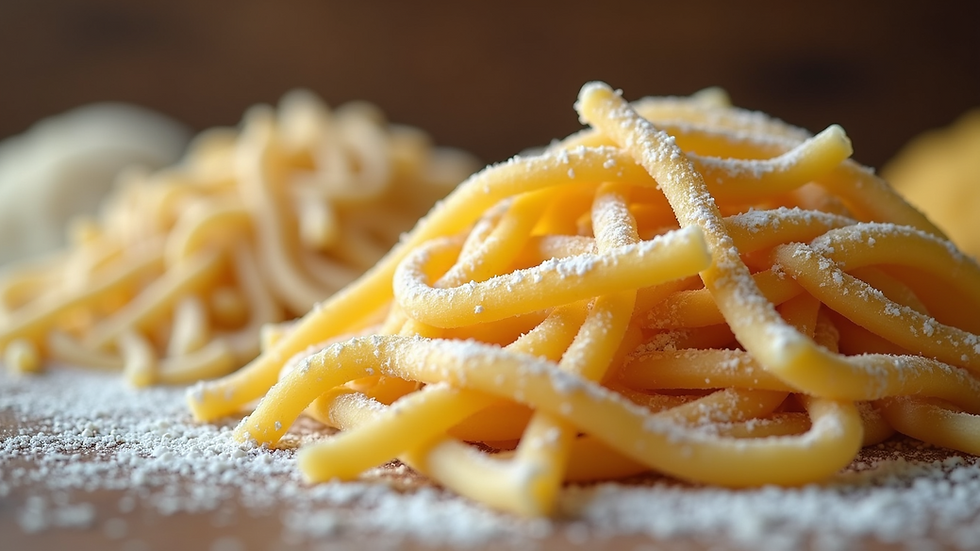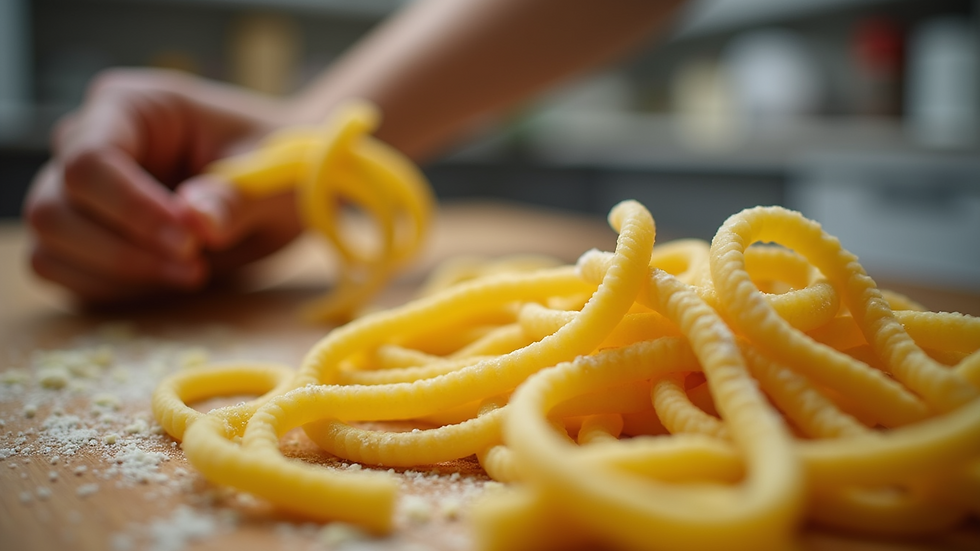What Makes High-Quality Pasta Ingredients Essential?
- A Merchant
- Jul 21
- 4 min read
Pasta is a staple in many households around the world. Whether you enjoy it in a simple marinara sauce, a creamy Alfredo, or adorned with fresh vegetables, the ingredients that go into the pasta itself significantly affect its taste and texture. In this post, we will explore why high-quality pasta ingredients are essential for crafting the perfect dish, delving into the key components that elevate pasta from average to extraordinary.
Understanding Pasta Ingredients
Before diving into the specifics of why ingredient quality matters, it's important to understand the basic components that make up pasta. Authentic pasta is primarily made from two ingredients: flour and water. While this simplicity is part of what makes pasta so beloved, the quality of these ingredients can dramatically change the final product.
Good flour produces a pasta that has a firm and chewy texture. On the contrary, lower-quality flour can lead to a mushy texture that doesn’t hold sauce well. Water quality is also important, as impurities can affect the overall flavor.

The Impact of Choosing Quality Flour
The choice of flour sets the foundation for great pasta. The type of wheat used will dictate not just flavor but also how well the pasta holds its shape. High-protein durum wheat semolina is widely considered the gold standard for pasta, due to its ability to produce pasta with the right amount of elasticity and chewiness.
High-quality flour has a higher gluten content which leads to superior texture. Gluten is what makes pasta springy and helps it maintain its shape during cooking. This is especially vital for traditional shapes like spaghetti and penne, where structural integrity is key.
Additionally, many artisanal pasta makers often use local or organic flours. These options not only provide unique flavors but also support local agriculture. Don’t hesitate to seek out specialized shops that offer a variety of flour types, as this can lead to culinary discovery.

What are the ingredients in authentic pasta?
In addition to flour and water, authentic pasta can include eggs, which are common in dishes like tagliatelle and pappardelle. Egg-rich pasta offers a richer flavor and a softer texture, making it perfect for filling ingredients or sauces. The eggs also add a beautiful golden hue, making the pasta visually appealing.
Variations in Ingredients:
Some regions of Italy have their own traditional methods of pasta making. For example, in regions like Emilia-Romagna, the use of eggs in pasta is widespread, while in southern Italy, you might find pasta made without eggs, relying solely on semolina flour and water.
Another aspect to consider is the inclusion of flavor-enhancing ingredients such as olive oil, salt, or spices. Each of these can contribute to a layer of flavor that makes one type of pasta distinctive from another.
The Role of Water Quality
While flour often steals the show, water should not be overlooked. The quality of water you use for kneading the dough can greatly impact the final product. In many regions, tap water contains minerals that might not be suitable for creating a delicate pasta dough.
If your local water supply has a strong taste or you are concerned about contaminants, using filtered or bottled water can help improve the dough's flavor. Proper hydration is also essential. Too much water can create a sticky, unusable mixture, while not enough water will leave the pasta dry and crumbly.
The Art of Pasta Making
Creating high-quality pasta is as much an art as it is a science. The process of mixing, kneading, and resting the dough is crucial for developing that perfect consistency.
After you combine the flour and water, you will want to knead the dough until it reaches a smooth texture. It's at this stage where you can also assess the dough's hydration. It should feel slightly tacky but not stick to your hands. Allowing the dough to rest is equally important, as it relaxes the gluten, making it easier to roll out without tearing.
Once you’ve rolled out the dough, cutting it into shapes can also affect cooking time and texture. Thin sheets may cook rapidly, while thicker shapes may require more time to ensure even cooking.

Why Fresh Local Ingredients Matter
The concept of using high-quality pasta ingredients extends beyond just flour and water. When you source fresh, local ingredients for your sauces and add-ons, you amplify the experience.
For instance, ripe tomatoes from a local farmer's market will produce a sauce bursting with flavor compared to those that have been shipped long distances and stored for weeks. Fresh herbs, seasonal vegetables, and high-quality cheeses all contribute layers of flavor that enhance your dish as a whole.
Incorporating fresh ingredients not only improves the taste, but also the nutritional value. Fresh vegetables are packed with vitamins and minerals. The combination of nutritious ingredients with the delightful essence of high-quality pasta gives a balanced meal that is as satisfying as it is healthy.
Final Thoughts
Understanding and focusing on using high-quality pasta ingredients makes a notable difference in your culinary pursuits. From the selection of flour to the incorporation of local produce, each step of your pasta-making adventure contributes to a delightful dining experience.
Investing in quality doesn't always mean more time. With just a little attention to detail and a willingness to select the best ingredients, you can elevate a simple dish into something memorable. Remember, pasta might be easy to make, but great pasta is a labor of love that blossoms through the finest components.
Whether you’re a cooking novice or a seasoned pro, balancing authenticity and quality can lead to delicious, homemade pasta that brings joy to your kitchen. If you are interested in exploring more about high-quality pasta ingredients, you can check out this link. Happy cooking!





Comments